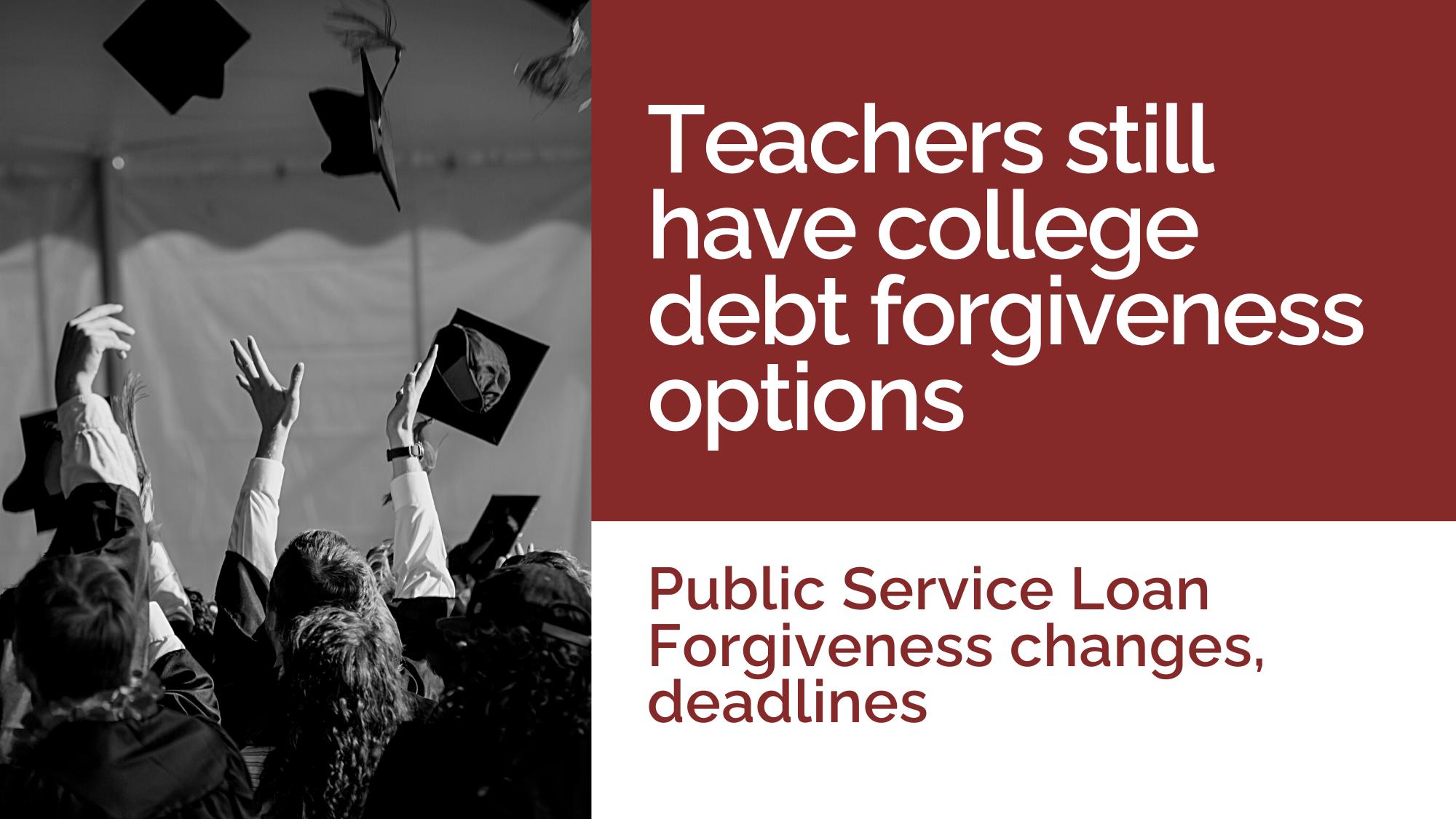Public Service Loan Forgiveness changes, deadlines
Posted: July 31, 2023
Despite the U.S. Supreme Court decision that blocked President Joe Biden’s college debt forgiveness plan to forgive up to $20,000 of debt to certain borrowers in June, teachers can still pursue forgiveness, especially as college loan payments resume in October.
The pandemic-era payment pause that began in March 2020 will end in August 2023. College loan interest will resume starting on Sept. 1, and payments will be due starting in October. Borrowers will receive their billing statements or other notice from their loan service providers at least 21 days before their payments are due.
Forgiveness options exist, and with pandemic-era eased restrictions lifting soon, here’s the latest ways to reduce college loan debt.
Public Service Loan Forgiveness (PSLF)
Public Service Loan Forgiveness (PSLF) is different from the recently blocked debt forgiveness of up to $20,000.
PSLF offers people who work in public service jobs, including teaching, an option for getting their college debt forgiven.
In 2022, the federal government enacted a temporary waiver to help more people qualify for forgiveness under PSLF. The waiver expired in October 2022, and several key benefits of the waiver are no longer valid.
Now, in order to qualify for PSLF:
- Your loan must be a direct, consolidated federal loan. The deadline to consolidate your loan so it is eligible for PSLF is Dec. 31, 2023.
- If you are not already on an income-driven repayment (IDR) plan, you must enroll in one.
- You must have made 120 qualifying payments to receive forgiveness.
Note: The federal government suspended 40 monthly payments in total since March 2020 due to the pandemic. Those 40 payments will count toward your PSLF’s required 120 payments.
Other eligibility requirements for PSLF include working full-time for a qualifying employer during the 120 payments for at least 30 hours per week.
New ‘SAVE’ income-driven repayment plan offers savings, other benefits
Because you must switch to an income-driven repayment plan to qualify for PSLF, consider the government’s newest plan called the Saving on a Valuable Education (SAVE) Plan.
While the government offers four different income-driven repayment plans, with the SAVE plan, you can enjoy benefits other IDR plans don’t offer.
The SAVE Plan:
- Eliminates 100% of remaining interest for both subsidized and unsubsidized loans after a scheduled payment is made under the SAVE Plan.
- If you make your monthly payment, your loan balance won’t grow due to unpaid interest.
- For example: If $50 in interest accumulates each month, and you have a $30 payment, the remaining $20 would not be charged.
- Increases the income exemption from 150% to 225% of the poverty line.
- You can save up to $1,000 a year and enjoy lower monthly payments, based on your discretionary income.
- Excludes spousal income for borrowers who are married and file separately
- The change removes the need for your spouse to co-sign your income-driven repayment (IDR) application.
To apply for the SAVE program, click here.
Teacher Loan Forgiveness
Teachers who teach full-time for five consecutive years for certain public schools and are highly qualified can apply for Teacher Loan Forgiveness. Eligible teachers can receive between $5,000 and $17,500 in forgiveness, depending on their position.
Highly qualified means educators:
- Must have attained at least a bachelor’s degree
- Have received full state certification as a teacher
- Have not had certification or licensure requirements waived on an emergency, temporary, or provisional basis.
Schools must be low-income, as defined by the Teacher Cancellation Low Income (TCLI) Directory, which is published by the U.S. Department of Education every year. Note: If your school is included in the TCLI Directory for at least one year of your teaching service, but is not included during subsequent years, your subsequent years of teaching at the school will still count toward the required five complete and consecutive academic years of teaching.
Eligible loan types are Direct Subsidized and Unsubsidized Loans and Subsidized and Unsubsidized Federal Stafford Loans.
Use NEA’s free online student loan evaluation tool to help eliminate your debt
Not sure what loan elimination plan is right for you? Let Savi do the work for you! Savi is the National Education Association (NEA)’s online college loan navigation tool that helps you determine the best way to start reducing or even eliminating your debt.
The tool is free for active HSTA members!
New to the NEA Member Benefits website? Create an account here.
Attend a future NEA Member Benefits ‘Navigating student loan forgiveness’ webinar
The NEA Member Benefits team invites you to attend future workshops to stay up-to-date on the latest news, deadlines, and steps you can take toward managing your college loan debt.
Monday, Sept. 11, from 4 to 5 p.m.
Tuesday, Oct. 10, from 11:30 a.m. to 12:30 p.m. (fall break)
Tuesday, Nov. 11, from 4 to 5 p.m.

